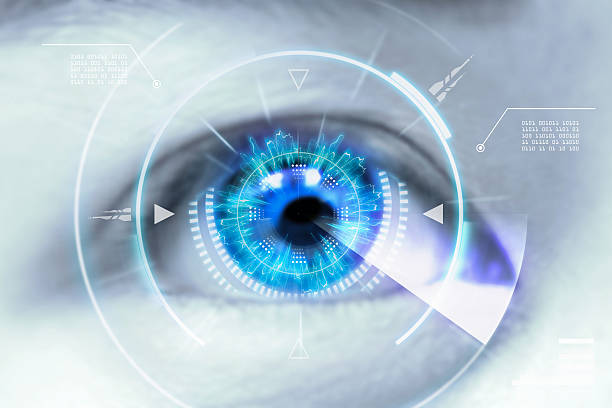CATRACT

What is cataract?
In cataract, the natural, transparent lens of the eye becomes cloudy, and people suffer from symptoms of cataract such as double or blurred vision. Patients often fail to differentiate colours and have trouble in their night vision. Cataract also makes it difficult for people to perform their daily tasks such as reading, walking on crowded roads, driving, and doing other routine housework. Cataract patients cannot judge how far objects are from them and from each other3. This makes them three times more vulnerable to falls compared to people of the same age who do not have cataract.
Types of cataracts
The lens is composed of layers, like an onion. The outermost is the capsule. The layer inside the capsule is the cortex, and the innermost layer is the nucleus. A cataract may develop in any of these areas. Cataracts are named for their location in the lens:
- A nuclear cataract is located in the center of the lens. The nucleus tends to darken with age, changing from clear to yellow and sometimes brown.
- A cortical cataract affects the layer of the lens surrounding the nucleus. The cataract looks like a wedge or a spoke.
- A posterior capsular cataract is found in the back outer layer of the lens. This type often develops more rapidly.
Causes & risk factors

Most cataracts are due to age-related changes in the lens of the eye that cause it to become cloudy or opaque. However, other factors can contribute to cataract development, including:
- Diabetes mellitus. People with diabetes are at higher risk for cataracts.
- Drugs. Certain medications are associated with cataract development. These include:
- Corticosteroids.
- Chlorpromazine and other phenothiazine related medications.
- Ultraviolet radiation. Studies show an increased chance of cataract formation with unprotected exposure to ultraviolet (UV) radiation.
- Smoking. There is possibly an association between smoking and increased lens cloudiness.
- Alcohol. Several studies show increased cataract formation in patients with higher alcohol consumption compared with people who have lower or no alcohol consumption.
- Nutritional deficiency. Although the results are inconclusive, studies suggest an association between cataract formation and low levels of antioxidants (for example, vitamin C, vitamin E, and carotenoids). Further studies may show that antioxidants can help decrease cataract development.
- Family History. If a close relative has had cataracts, there is a higher chance of developing a cataract.
Rarely, cataracts are present at birth or develop shortly after. They may be inherited or develop due to an infection (such as rubella) in the mother during pregnancy. A cataract may also develop following an eye injury or surgery for another eye problem, such as glaucoma.
Symptoms

Cataracts generally form very slowly. Signs and symptoms of a cataract may include:
- Blurred or hazy vision.
- Reduced-intensity of colors.
- Increased sensitivity to glare from lights, particularly when driving at night.
- Increased difficulty seeing at night.
- Change in the eye’s refractive error, or eyeglass prescription.
Diagnosis
Cataracts are diagnosed through a comprehensive eye examination.https://lucknoweyecare.com This examination may include:
- Patient history to determine if vision difficulties are limiting daily activities and other general health concerns affecting vision.
- Visual acuity measurement to determine to what extent a cataract may be limiting clear distance and near vision.
- Refraction to determine the need for changes in an eyeglass or contact lens prescription.
- Evaluation of the lens under high magnification and illumination to determine the extent and location of any cataracts.
- Evaluation of the retina of the eye through a dilated pupil.
- Measurement of pressure within the eye.
- Supplemental testing for color vision and glare sensitivity.
Further testing may be needed to determine how much the cataract is affecting vision and to evaluate whether other eye diseases may limit vision following cataract surgery.
Using the information from these tests, your doctor of optometry can determine if you have cataracts and advise you on your treatment options.
Cataract Treatment
Surgery on time is the only effective way to restore vision clarity in cataracts. Cataract surgery is a safe procedure in which the natural lens of the eye is replaced with an artificial lens known as an ‘intraocular lens (IOL). It is the most beneficial with the least complications if performed on time. As the natural lens starts to become more clouded, it also becomes denser and harder. Surgery at this stage becomes difficult and there are chances that vision may not be restored completely5.
When cataract starts in one eye, patients often miss early symptoms because the other eye works harder to maintain vision clarity for both eyes6. It is when the cataract develops in the other eye as well, that patients have trouble in their daily activities. For example, they may need a brighter light to read, they may find it difficult to drive at night or they may not be able to see the picture on TV clearly. We want to catch the cataract early and, in time to restore vision clarity. This is why people above the age of 50 years should visit their eye care specialist every year to prevent delays in the diagnosis of cataract

